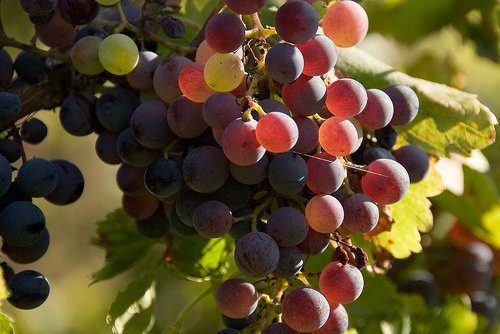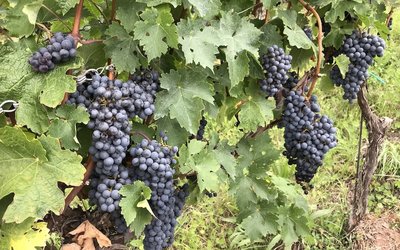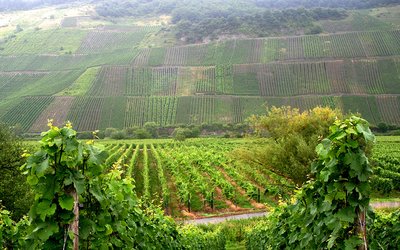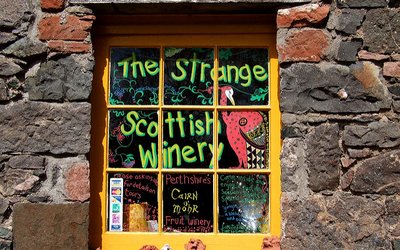
Roussillon is a wine-producing area in southern France. It is situated in the larger region Languedoc-Roussillon, near the city of Perpignan. Languedoc-Roussillon remains the largest wine-producing region in France by both area and volume, with viticulture accounting for one third of agricultural land in 2010. The warm and dry conditions of 2001–2010 have already had negative impacts for producers in Roussillon, and projections suggest that the drying trend will increase in the future. Climatic change will affect both grape yields and wine quality.
Impacts on yields
The main concern of wine producers is excessive summer water stress, leading to decreasing yields. It was estimated that yields in Languedoc-Roussillon could decrease by 26% by 2080 due to increased water stress alone. This is due to three climatic effects:
- higher temperatures lead to an accelerated phenological cycle and thus to a shorter growing season and a biophysical decrease in yield;
- a decrease in summer rainfall impacts on grapevine vigor and berry weight, especially for soils with low water-holding capacity. Disturbances to autumn, winter and spring rainfall patterns limit aquifer recharge and results in premature soil profile desiccation, which can negatively impact on berry size;
- the accumulative effects of increasing temperatures and decreasing rainfall leads to higher evapotranspiration demand, and thus to higher water consumption by vines.
Impacts on the quality of harvest
Night temperatures during maturation are particularly important influences on quality. An increase in minimum temperatures during the growing season can have a negative impact on aromas and tannins, and thus on vintage quality. In August, from veraison to harvest, warm nights expose grapevines to a risk of a block in phenolic maturation, leading to excessive berry sugar content, which leads in turn to a need for post-harvest manipulation such as de-alcoholization.
Adaptation – Irrigation
Drip irrigation can be an efficient technique to compensate for an increased water deficit in Mediterranean vineyards. However, several factors hinder the development of irrigation in Roussillon:
- groundwater and surface water resources are limited in the hilly areas and are already in strong competition with both fruit production in valley areas and with urban uses along the coast;
- almost two millennia of grape growing in Roussillon have resulted in highly fragmented blocks, a situation that poses technical problems for the implementation of a collective irrigation system. Furthermore, the current marketing strategy of terroir wines and the broader economic situation do not encourage any restructuring of the blocks;
- until the 1970s Roussillon’s valley-floor vineyards were often flood-irrigated to produce high-yielding but low-quality grapes. As a result, there is a lack of an historical cultural acceptance of the advantages of controlled deficit irrigation to produce premium wine.
Adaptation - Moving of blocks
One option for producers to adapt to future climatic risk might involve the purchasing of more blocks in areas considered as potentially optimal in the next decades and the selling of blocks more exposed to negative changes in climate. However, current AOC regulations limit the spatial expansion of wine-producing areas.
Adaptation - New varieties
The choice to cultivate a particular variety of Vitis vinifera depends not only on trends in consumer demand and suitability to the local bioclimatic conditions, but also on AOC regulations. Current AOC legislation for Côtes-du-Roussillon-Villages established the use of two or more varieties to produce classified red wine: one variety must be either Grenache and Syrah, and the other Carignan or Mourvedre. Again, appellation rules may need to evolve in an iterative manner to support long-term adaptation.
Source: Lereboullet et al., 2013. Regional Environmental Change, Published Online 28 March 2013.
Photo: David Blaikie (www.flickr.com)








